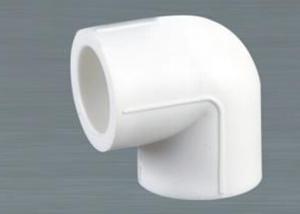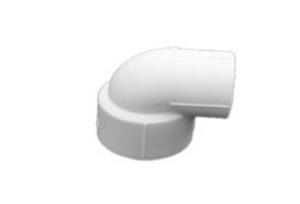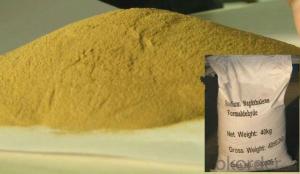Acid Stains On Stainless Steel
Acid Stains On Stainless Steel Related Searches
Best Paint For Stainless Steel Blanket Insulation For Steel Buildings Primer For Galvanized Steel Foam Filter For Stainless Steel H S Code For Stainless Steel Surface Grinding Wheels For Stainless Steel Surface Grinding Wheels For Hardened Steel Hole Saw For Stainless Steel Paint For Stainless Steel Stainless Steel For BbqHot Searches
Steel Mesh Panels For Sale Price For Stainless Steel Scrap Scrap Price For Stainless Steel Price For Stainless Steel Stainless Steel Tank For Sale Stainless Steel Sheets For Sale Cheap High Tea Sets For Sale Stainless Steel Tanks For Sale Stainless Steel For Sale High Density Fiberboard For Sale Solar Hot Water Collectors For Sale Scaffolding For Sale In Uae Scaffolding For Sale In Ireland Scaffolding For Sale In Houston Type Of Inverter For Solar Price Of Shipping Containers For Sale Types Of Inverter For Solar Stock Price For Aluminum Used Solar Inverter For Sale Steel Mesh Panels For SaleAcid Stains On Stainless Steel Supplier & Manufacturer from China
Okorder.com is a professional Acid Stains On Stainless Steel supplier & manufacturer, offers integrated one-stop services including real-time quoting and online cargo tracking. We are funded by CNBM Group, a Fortune 500 enterprise and the largest Acid Stains On Stainless Steel firm in China.Hot Products
FAQ
- No, stainless steel pipes cannot be directly insulated with polyphthalamide. Polyphthalamide (PPA) is a high-performance thermoplastic that is often used as an insulating material due to its excellent thermal and electrical properties. However, PPA is typically used as a polymer or resin for injection molding applications, rather than as an insulation material for pipes. When it comes to insulating stainless steel pipes, there are several commonly used insulation materials such as fiberglass, mineral wool, or foam insulation. These materials are designed to provide thermal insulation and prevent heat transfer, while also offering protection against corrosion and condensation. If there is a need to insulate stainless steel pipes, it is best to choose an appropriate insulation material that is specifically designed for pipe insulation, rather than attempting to use polyphthalamide which is not typically used for this purpose.
- The specific application and requirements dictate the internal lining used for stainless steel pipes. Various options are available: 1. Stainless steel pipes commonly use a polyethylene (PE) lining. PE lining offers excellent corrosion resistance and is appropriate for conveying water, chemicals, and other corrosive fluids. 2. To safeguard against corrosion, stainless steel pipes frequently employ epoxy coatings as internal linings. Epoxy linings are long-lasting, chemical-resistant, and adjustable in thickness according to the application. 3. In certain cases, stainless steel pipes may be lined with cement mortar to protect against corrosive fluids or enhance structural integrity. Cement mortar linings are often employed in water supply pipelines. 4. Stainless steel pipes that necessitate a high level of chemical resistance utilize polytetrafluoroethylene (PTFE) linings. PTFE linings are unreactive and can endure a broad range of corrosive substances, making them suitable for industries like pharmaceuticals and chemicals. Consulting experts or engineers is essential in determining the appropriate internal lining for stainless steel pipes. Factors like the type of fluid being transported, operating conditions, and desired corrosion resistance level should be taken into account.
- Various applications commonly utilize different types of stainless steel pipe connections. Some of the most frequently used types are as follows: 1. Threaded Connections: These connections involve joining two pipes with matching threads by screwing them together. They are typically employed for smaller pipe sizes and applications with low pressure. 2. Socket Weld Connections: In this type of connection, the pipe is inserted into a socket and then welded around the joint. Socket weld connections are primarily used for smaller pipe sizes and applications with high pressure. 3. Butt Weld Connections: Butt weld connections entail welding the ends of two pipes together. They are commonly employed for larger pipe sizes and applications with high pressure. 4. Flanged Connections: Flanged connections involve connecting two pipes by attaching a flange to each end. The flanges are then secured by bolts to create a strong joint. Flanged connections are frequently used for larger pipe sizes and applications that require easy disassembly. 5. Compression Connections: Compression connections utilize a compression fitting to connect two pipes. This type of connection is particularly useful for applications that require frequent disassembly and reassembly. 6. Grooved Connections: Grooved connections involve using grooved fittings to connect two pipes. The grooves on the fittings align with grooves on the pipes, and a gasket is inserted to create a seal. Grooved connections are commonly utilized in fire protection systems and industrial piping. Each type of stainless steel pipe connection offers its own advantages and disadvantages. The selection of the appropriate connection type depends on the specific requirements of the application, taking into account factors such as pressure, temperature, pipe size, and ease of installation.
- Can stainless steel water pipes be cooled and bent?
- Stainless steel water pipes can be cooled and bent.
- The weight of stainless steel pipes can vary depending on the size, thickness, and length of the pipes. It is important to consider these factors in order to determine the exact weight of stainless steel pipes.
- Electropolished stainless steel pipes undergo a process called electropolishing, which involves the removal of surface impurities and oxidation through an electrochemical process. This results in a smooth, shiny, and corrosion-resistant surface finish. On the other hand, bright annealed stainless steel pipes are heat-treated to achieve a bright, reflective surface finish. While both processes enhance the aesthetics of the pipes, electropolishing provides additional benefits such as improved cleanability and increased resistance to corrosion.
- Pressure testing stainless steel pipes is an essential step to ensure their integrity and safety. Here is a step-by-step guide on how to pressure test stainless steel pipes: 1. Prepare the pipes: Before starting the pressure test, ensure that the stainless steel pipes are clean and free from any debris or contaminants. Inspect the pipes for any visible defects, such as cracks or leaks, and repair or replace them if necessary. 2. Gather the necessary equipment: You will need a pressure testing pump or equipment capable of generating the desired pressure, pressure gauges, and suitable seals or plugs to close off the pipe ends. 3. Determine the required pressure: Consult the engineering specifications or relevant industry standards to determine the appropriate pressure to which the stainless steel pipes should be tested. This pressure is usually specified in pounds per square inch (psi). 4. Close off the pipe ends: Use suitable seals or plugs to close off all the ends of the stainless steel pipes. Ensure that the seals or plugs are securely attached to prevent any leakage during the pressure test. 5. Connect the pressure testing equipment: Connect the pressure testing pump or equipment to one end of the pipe using a pressure gauge to monitor the pressure accurately. Make sure the connections are tight and leak-proof. 6. Apply pressure gradually: Slowly increase the pressure in the stainless steel pipes using the pressure testing pump or equipment. Monitor the pressure gauge closely and ensure it reaches and stabilizes at the desired testing pressure. This process should be done gradually to avoid sudden pressure surges that could potentially damage the pipes. 7. Maintain the pressure: Maintain the pressure at the desired level for a specified duration, typically as recommended by the engineering specifications or standards. This duration could range from a few minutes to several hours depending on the application and requirements. 8. Inspect for leaks: While maintaining the pressure, carefully inspect the stainless steel pipes for any signs of leakage. Look for any visible leaks, listen for hissing sounds, or use a leak-detection solution or soapy water to identify any escaping air or bubbles. If leaks are detected, stop the pressure test and address the issue before proceeding. 9. Release the pressure: Once the pressure test is completed, gradually release the pressure from the stainless steel pipes using the pressure testing pump or equipment. Take caution while releasing the pressure to prevent sudden decompression that could potentially damage the pipes. 10. Evaluate the results: Inspect the stainless steel pipes again after the pressure test to ensure no new leaks or defects have emerged. If the pipes have successfully passed the pressure test without any issues, they can be considered safe and suitable for their intended application. It is important to note that pressure testing stainless steel pipes should be conducted by qualified personnel following industry standards and guidelines to ensure accuracy and safety.
- Yes, stainless steel pipes can be used for chemical storage tanks. Stainless steel is known for its excellent corrosion resistance properties, making it an ideal material for storing chemicals. It is resistant to a wide range of chemicals, including acids, alkalis, solvents, and gases. Additionally, stainless steel is a durable and strong material, ensuring the structural integrity of the storage tank. It is also easy to clean and maintain, making it suitable for storing different types of chemicals. However, it is important to consider the specific chemical properties and requirements before selecting stainless steel pipes for chemical storage tanks.













































